When it comes to preserving its past, Mexico doesn’t just protect old buildings, it honours living history. From temples built by ancient civilisations to castles, the famous historical places in Mexico speak through architecture, ruins and preserved artefacts. These are places where sacred rituals were performed, emperors ruled, and ideas of independence were born. For travellers looking to connect deeply with Mexico’s roots, these timeless sites offer powerful insight and an experience far beyond sightseeing.
10 Famous Historical Places In Mexico
Every one of these destinations reveals a layer of Mexico’s long and powerful past. Here are the best of historical places in Mexico:
1. Chichen Itza
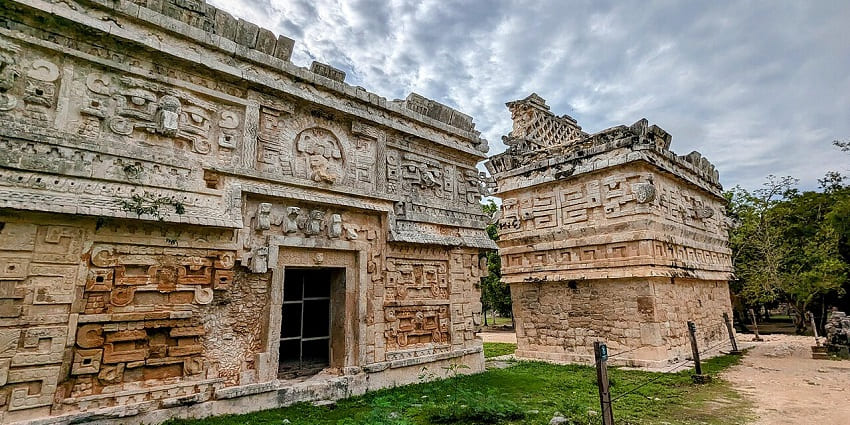
Photo: edenpictures / Wikimedia Commons
Travel deep into Yucatán, and you’ll find Chichen Itza, one of those places that stays with you long after you’ve left. This ancient Maya city was built with a clear purpose to honour the gods and observe the skies. Its most recognised structure, El Castillo, has 365 steps and was built to mark solar events. During the equinox, the shadow of a serpent appears to move down the steps, an effect designed to honour the feathered serpent deity. The Great Ball Court nearby was used for high-stakes ceremonial games. Just past it, the Temple of the Warriors displays hundreds of carved columns showing military figures and sacred symbols.
Timings: 8 AM – 5 PM
Nearby Attractions: Cenote Ik Kil, Valladolid, Ek Balam
2. Teotihuacan
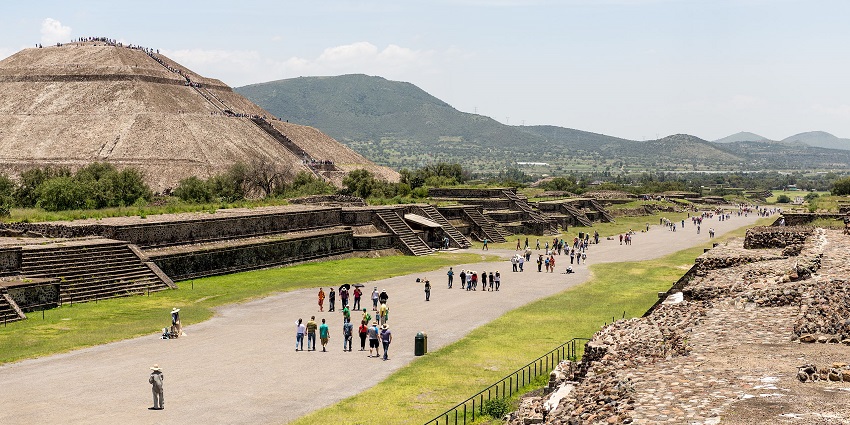
Photo: Ralf Roletschek / Wikimedia Commons
Teotihuacan is one of the most powerful and famous historical places in Mexico, located just outside Mexico City. Long before the rise of the Aztecs, this city was already a thriving hub of trade, religion, and architecture. The Avenue of the Dead cuts through the heart of the city, leading visitors past towering structures and residential compounds. The Pyramid of the Sun stands at its centre. Climbing its steep steps gives a clear view of how the city was laid out with symmetry and scale. Teotihuacan was a planned city built with incredible skill. Its size, influence, and mystery have kept scholars intrigued for decades.
Timings: 9 AM – 5 PM
Nearby Attractions: Basilica of Guadalupe, Mexico City Historic Centre
3. Palenque Ruins
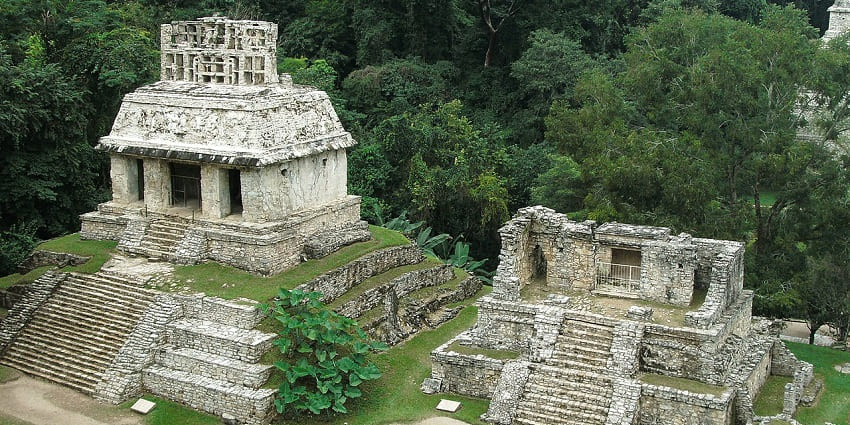
Photo: ben_kitchener3 / Wikimedia Commons
Hidden in the tropical forests of Chiapas, the Palenque Ruins are one of the most famous sites of the Maya world. That structure with its stone carvings and secret passages, draws scholars from around the world. Close by is the Palace, a long complex with corridors, courtyards, and a rare Maya tower used for observation. What makes Palenque distinct is its setting. Thick jungle presses close around every structure, and the sound of howler monkeys carry through the trees. Unlike more excavated sites, parts of Palenque still remain buried under earth and vegetation.
Timings: 8:30 AM – 5 PM
Nearby Attractions: Agua Azul Waterfalls, Misol-Ha, Palenque town
4. Monte Albán
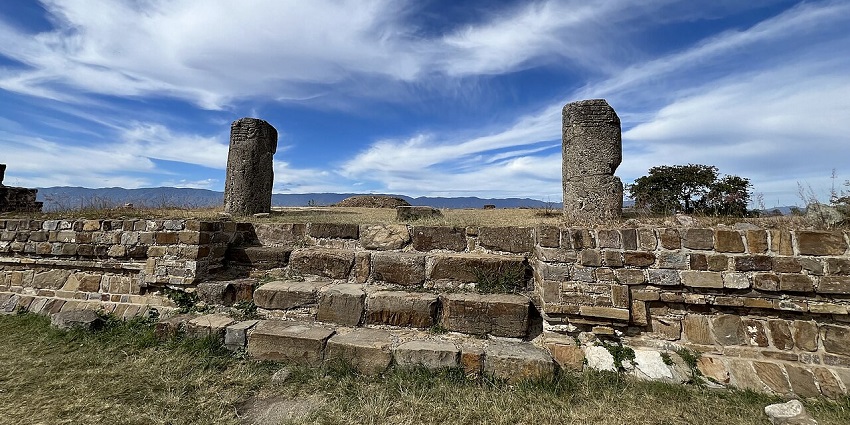
Photo: WendyAvilesR / Wikimedia Commons
High above Oaxaca Valley sits Monte Albán, one of the earliest cities in Mesoamerica. The Zapotecs began building and carving platforms and plazas into the mountain’s spine around 500 BCE. What remains today are wide terraces, ceremonial plazas, and stone monuments scattered across a flattened hilltop. The site was once the centre of Zapotec power, with rulers overseeing politics, religion, and trade from this very ridge. From nearly every point on the site, you can look down at the entire valley, just as the ancient priests and rulers would have.
Timings: 8 AM – 5 PM
Nearby Attractions: Oaxaca City, Atzompa ruins, San Bartolo Coyotepec
5. Templo Mayor
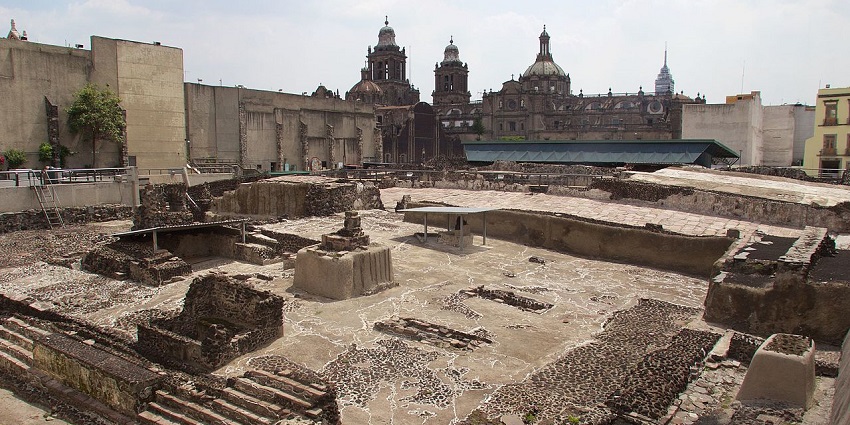
Photo: Mike Peel / Wikimedia Commons
Right in the centre of Mexico City lies Templo Mayor, once the spiritual heart of Tenochtitlan, the Aztec capital. Today, it is one of the most famous historical places in Mexico, visited by travellers, scholars, and locals. Visitors can now walk through the exposed layers of stone platforms and altars that once formed the sacred centre of Aztec life. Carvings, offerings, and even human remains have been uncovered here, each piece helping to tell the story of a powerful empire. The museum next to the site houses many of these finds and adds depth to the visit with artefacts and context.
Timings: Tuesday to Sunday, 9 AM – 5 PM
Nearby Attractions: Zócalo, Metropolitan Cathedral, National Palace
6. Uxmal
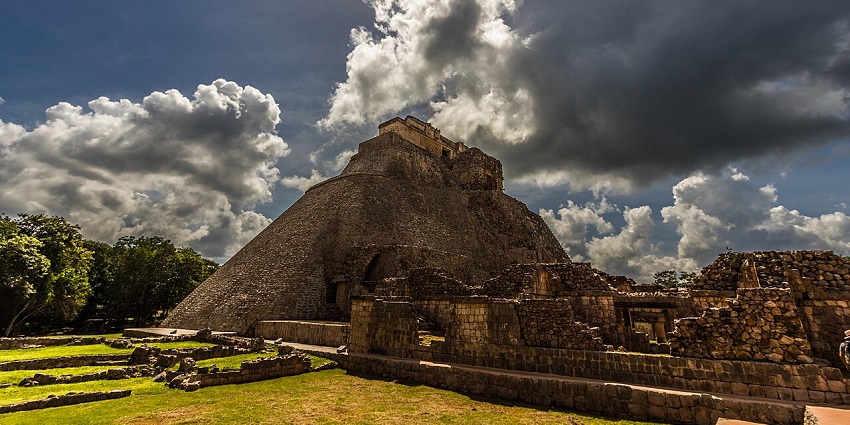
Photo: Alejandro Hernández Osuna / Wikimedia Commons
Uxmal stands in the Puuc region of Yucatán, widely regarded as one of the most beautifully designed ancient cities. The Pyramid of the Magician, built in an oval shape unlike the stepped pyramids elsewhere, rises steeply from the centre. According to local legend, it was built in a single night by a dwarf with magical powers. Just across from it is the Nunnery Quadrangle, where intricate latticework and masks of Chaac, the rain god, decorate the façades. Uxmal didn’t rely on cenotes like other cities but built a clever system of chultuns, the underground cisterns to collect rainwater.
Timings: 8 AM – 5 PM
Nearby Attractions: Kabah, Ruta Puuc, Hacienda Yaxcopoil
7. Tulum Ruins
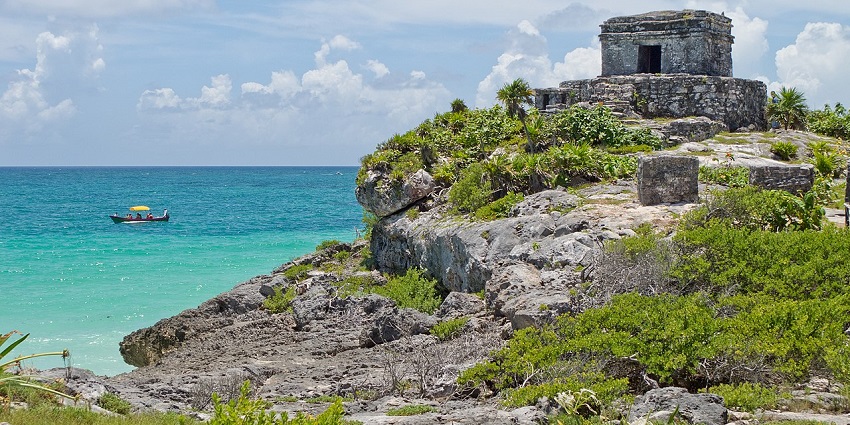
Photo: Carlos Delgado / Wikimedia Commons
Perched on cliffs overlooking the Caribbean Sea, the Tulum Ruins are among the most famous historical places in Mexico. Unlike inland Maya cities, Tulum was a coastal stronghold active in trade and defence. The main structure of El Castillo sits right at the edge of the cliff, with panoramic views of the sea below. Nearby, the Temple of the Frescoes still holds traces of wall paintings and carvings honouring Maya gods. The entire city was once walled, and parts of that barrier still stand. Because of its location, Tulum also served as a key point in maritime trade routes.
Timings: 8 AM – 5 PM
Nearby Attractions: Tulum Beach, Gran Cenote, Sian Ka’an Reserve
8. El Tajín
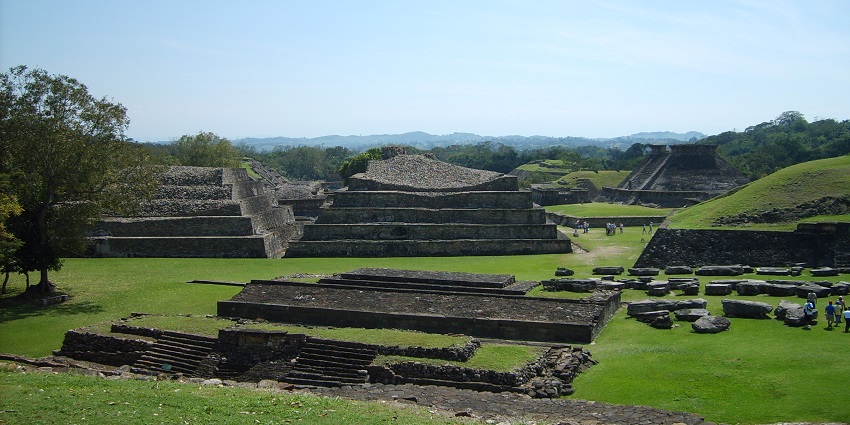
Photo: Simon Burchell / Wikimedia Commons
In the northern part of Veracruz, El Tajín was once the political and religious heart of the Totonac people. The Pyramid of the Niches, with 365 small openings arranged across its tiers, possibly linked to the solar cycle, is the most recognisable structure here. This stepped temple reflects a style not found at other Mesoamerican sites. Around it, more than a dozen ball courts remain, many of them decorated with stone panels that show players, rituals, and outcomes of the games. These carvings reveal how central the ceremony was to the city’s life.
Timings: 8 AM – 5 PM
Nearby Attractions: Papantla town, Voladores show, Cempoala
9. San Juan Parangaricutiro Church
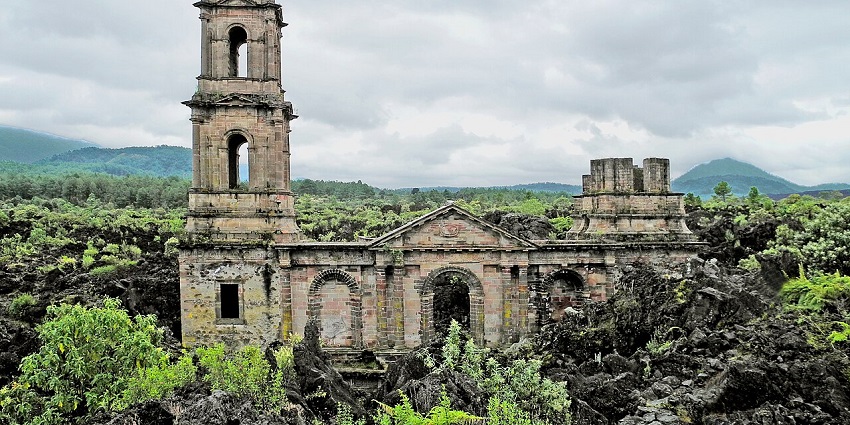
Photo: LBM1948 / Wikimedia Commons
In the Mexican state of Michoacán, there’s a church that rises out of a frozen sea of black lava. The lava covered homes, streets, and fields, but the church’s altar and tower remained standing. It’s now one of the most famous historical places in Mexico, not for what people built, but for what nature spared. To reach it, you pass through a landscape shaped by fire, with sharp volcanic rock underfoot. The church appears without warning, its stone tower still upright, its altar untouched, surrounded by silence. Locals still hold prayers there.
Timings: Daylight hours, best in the morning
Nearby Attractions: Parícutin Volcano, Angahuan, Tzararacua Falls
10. Casa Azul (Frida Kahlo Museum)
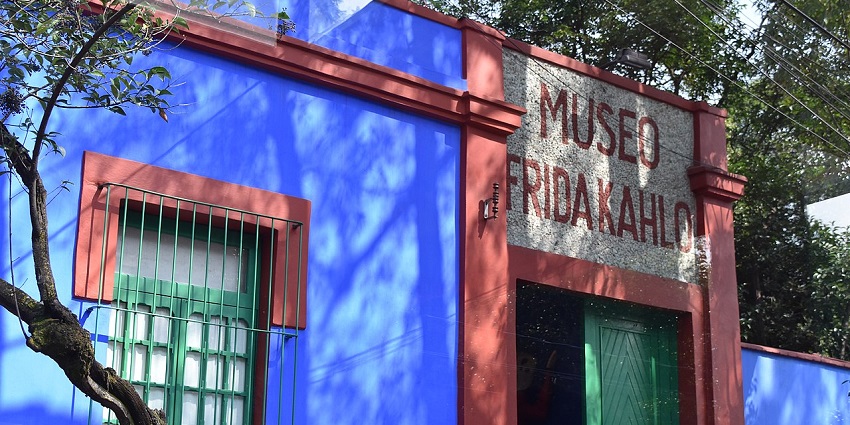
Photo: Isabel Pinzon / Wikimedia Commons
In a quiet corner of Mexico City’s Coyoacán neighbourhood, Casa Azul preserves the world of Frida Kahlo exactly as she lived it. Frida was born in this house and spent most of her life painting within its rooms. The bed during her recovery from surgeries sits beside a mirror she used to paint self-portraits. Her wheelchair is placed at her easel. The kitchen, simple and colourful, still holds the clay pots she once used. Outside, the garden feels calm, with native plants and sculptures placed between trees. Every room holds parts of her story, told through colour, pain, love, and resilience without needing a single spoken word.
Timings: Tuesday to Sunday, 10 AM – 6 PM
Nearby Attractions: Leon Trotsky Museum, Coyoacán Market, Centenario Garden
Each of these famous historical places in Mexico holds something real, something you can see, touch, and feel. Some were built to honour gods, others to house rulers, and a few have survived disasters that changed the land around them. You walk through ancient cities, past walls that once heard chants, orders, prayers, and silence. There’s no better way to understand Mexico than by standing in the places where its history was made. Let TripXL help you discover Mexico’s most meaningful landmarks.
Cover Photo: Daniel Schwen / Wikimedia Commons


 WhatsApp
WhatsApp
 Twitter
Twitter









